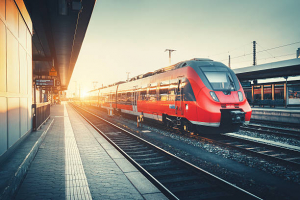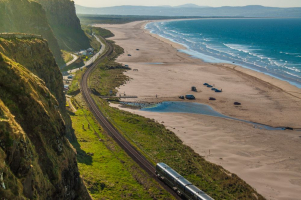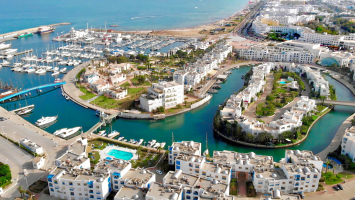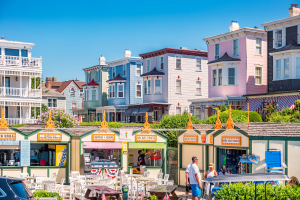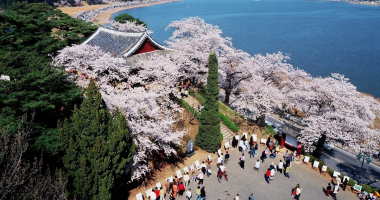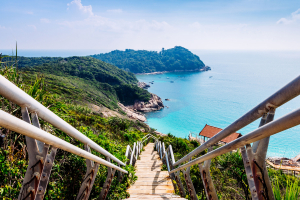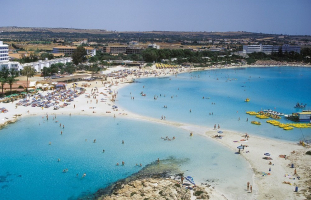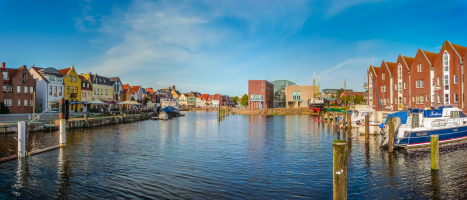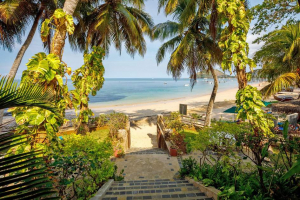Top 12 Most Beautiful Railway Stations
It's pretty impressive that train stations look so good considering they're basically functional buildings whose sole purpose is to get you from where you are ... read more...now to somewhere else. Indeed, the railway has inspired some of the most iconic civic design of the last two centuries, including majestic monuments, palaces, and cathedrals dedicated to the power of the stream and the technologies that have replaced it. They're creating country and continent-spanning travel networks, proving that practical infrastructure doesn't have to look tired or mundane. Still not convinced? Here are 12 train stations from around the world that are so beautiful that you won't mind if your train is delayed. They span a variety of styles, eras, and continents.
-
With 44 platforms and 67 tracks, the Grand Central Terminal is the largest train station in the world. Currently standing structure with a Beau-Arts design. Cornelius Vanderbilt, a businessman in the transportation industry, constructed the original Grand Central in 1871; however, it was demolished in 1903. The current design, finished in 1913, is still a masterpiece of New York architecture. The painted zodiac constellations on the vast concourse's cavernous domed ceiling were nearly completely covered by cigarette smoke damage until a 1998 restoration. Its vast concourse is distinguished by elegant marble staircases at either end and a four-faced milk-glass and brass clock above its central information booth.
The Tiffany clock on the terminal's 42nd Street façade is another highlight, as is the landmark subterranean Oyster Bar restaurant, which has a serpentine lunch counter, a whispering gallery in its entryway arch, and terra-cotta Guastavino tiles lining its vaulted ceiling. It was once home to art galleries and a museum. The railway station is frequently included in the top ten lists. It has appeared in a number of films, including The Godfather and Men in Black.
Grand Central in New York, more than any other railway station in the world, perfectly encapsulates the romance of rail travel. Every day, you'll see tearful greetings and farewells, firm business handshakes, and scurrying commuters with their heads down, determined to reach one of the station's 44 platforms in every area of the spacious main lobby.With over 26,000,000 visitors stopping by to admire the Beaux-Arts architecture or to gather beneath the recognizable clock in the main concourse, a design classic by Henry Edward Bedford, Grand Station may be the sixth most visited tourist destination in the world for this reason.
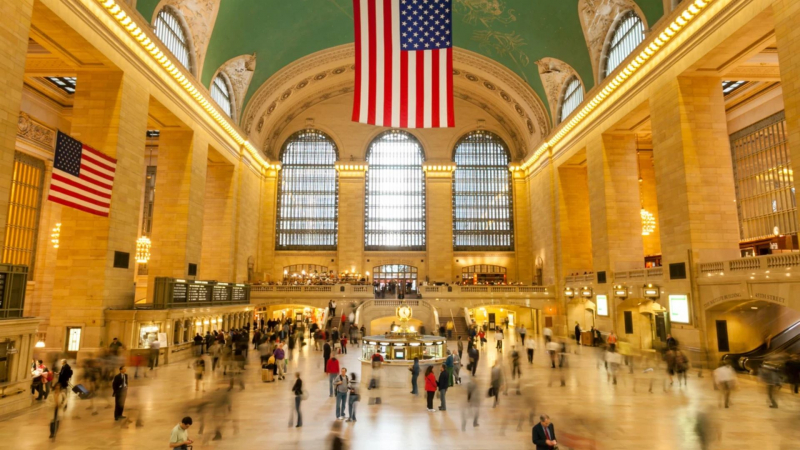
The main atrium at Grand Central Terminal - Dreamstime 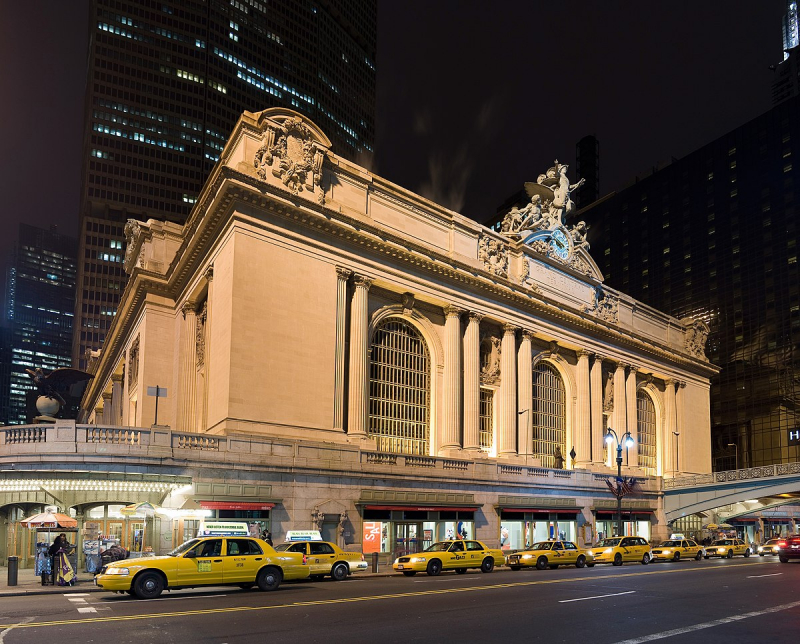
Wikipedia -
Chhatrapati Shivaji Terminus, the only railway station on the list of UNESCO World Heritage Sites, is an example of architectural triumph. It was completed in 1888 and designed by Frederick William Stevens in a blend of traditional Mughal and Victorian Gothic architecture. The busiest station in India, beloved and despised by commuters and lunchbox-delivering dabbawalas alike, was built to commemorate Queen Victoria's Golden Jubilee.
The station, formerly known as the Victoria Terminus for much of its existence, changed its name in 1996 to Chhatrapati Shivaji, the founder of the Maratha Empire. Given the station's impressive colonial façade, it is not surprising that the majority of locals still refer to it as Victoria. Although they made an appearance in the worldwide hit movie Slumdog Millionaire, the commuter platforms down below are strictly functional, albeit with a tiny dash of Hollywood magic.
Actually, there aren't many similarities between Chhatrapati Shivaji and St Pancras, Britain's magnificent Victorian railroad. With its abundance of domes and spires and four-meter-tall marble statue meant to symbolize "Progress," in case anyone missed the point, it's actually much grander than George Gilbert Scott's Gothic red-brick effort.
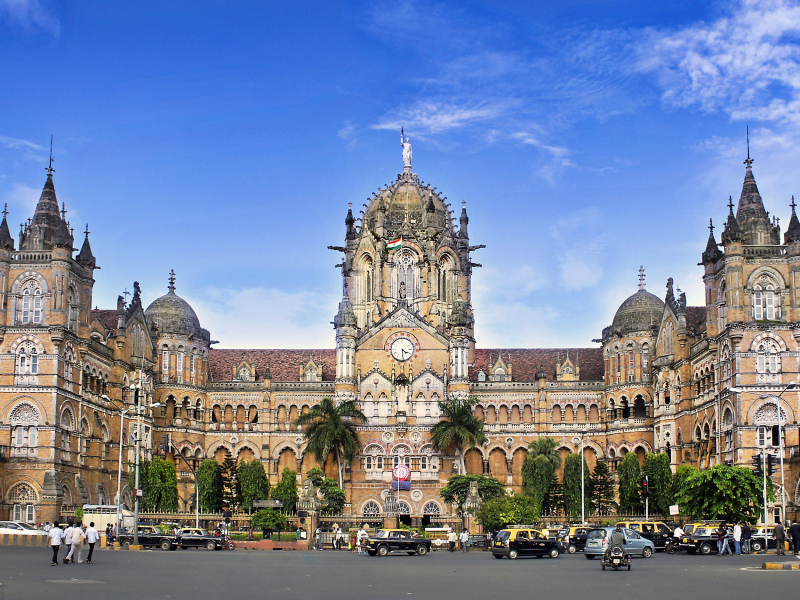
Lonely Planet 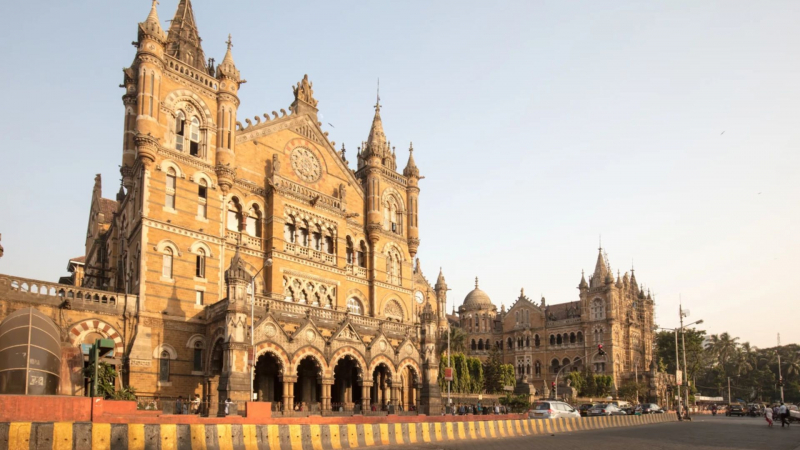
Chhatrapati Shivaji Terminus - Dreamstime -
This station, designed by Arthur Benison Hubback, was completed in 1917. Kuala Lumpur Railway Station, built in an eclectic Neo-Moorish/Mughal/Indo-Saracenic style, brims with design elements from both East and West. It's difficult to believe it's a railway station because it looks more like a palace. With the opening of the new Kuala Lumpur Central Station, this station is no longer as prominent in terms of commuters, but it still attracts a large number of visitors due to its beauty.
A fantastical collection of minarets, dome-topped pavilions, and articulated arches, Malaysia is a neo-Moorish delight. The magnificent white-and-cream Anglo-Asian station, which is now more of a hub for commuters than tourists, is still worth a visit.
Sadly, Kuala Lumpur Sentral has become somewhat of a backwater as a result of the city's other station receiving all long-distance and intercity rail traffic. There is no prettier sight in Kuala Lumpur than when dusk falls and swifts dart among its domes and minarets.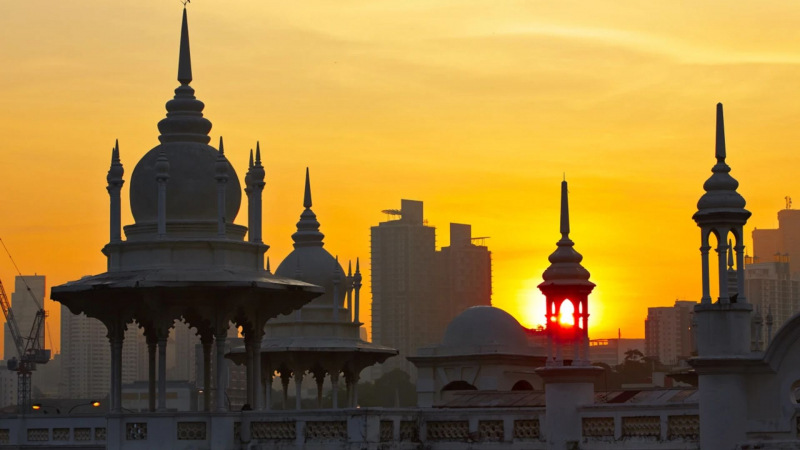
Railway station in Kuala Lumpur - Dreamstime 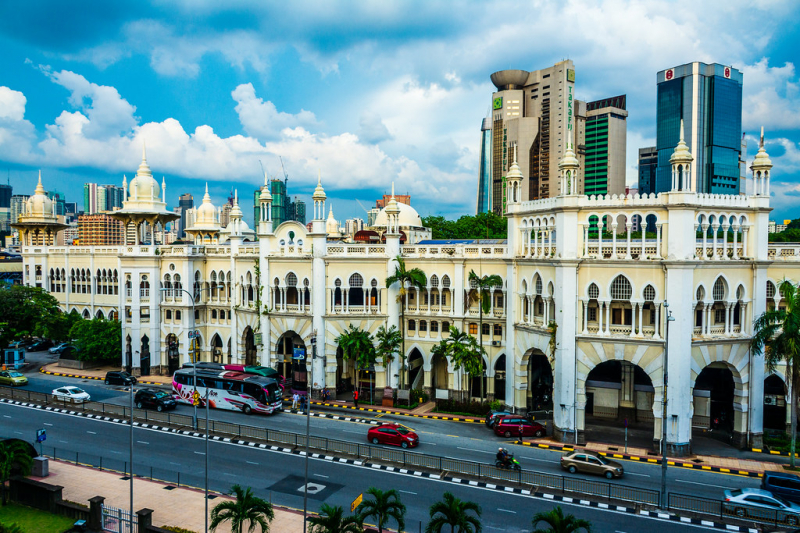
Heritage Buildings of Malaysia -
One of the grandest train stations in the world is the Kanazawa station in Japan. The enormous "drum gate," whose legs resemble tsuzumi drums, and the enormous dome are its most notable features. The main train station in Kanazawa is a fascinating blend of the present and the future.
A sizable traditional wooden torii gate, similar to those found outside Japanese shrines, is in front of it, and the Motenashi Dome, a sparkling structure made of glass and aluminum, covers the station's entrance. Every last detail has been carefully considered, down to the glittering platform columns that are adorned with gold leaf, one of Kanazawa's most well-known exports.
When Kanazawa's circa 1898 station was upgraded in 2005, there were mixed reactions. Many people found the addition of the ultramodern glass and steel dome and enormous drum-shaped wood gate to be out of place. However, tourists continue to swarm to the dramatic additions to the Ishikawa, Japan station, and the new buildings' allure easily competes with the other attractions in the historic town, such as a geisha district and former samurai quarters.
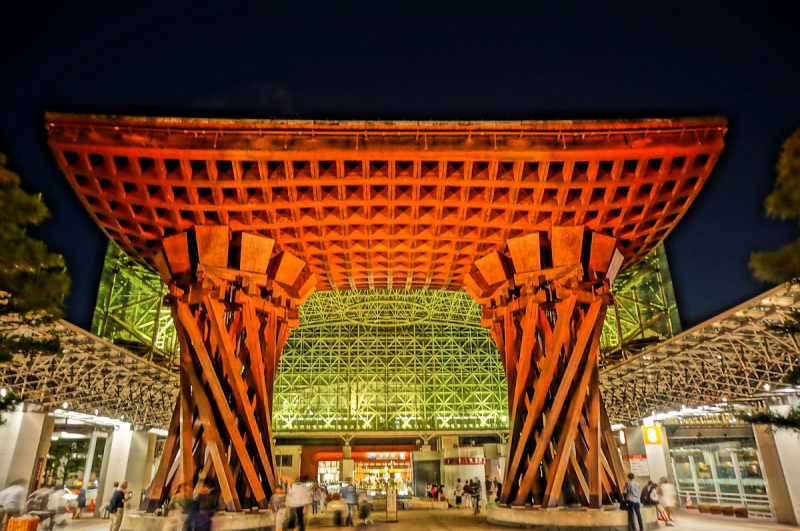
Tripadvisor 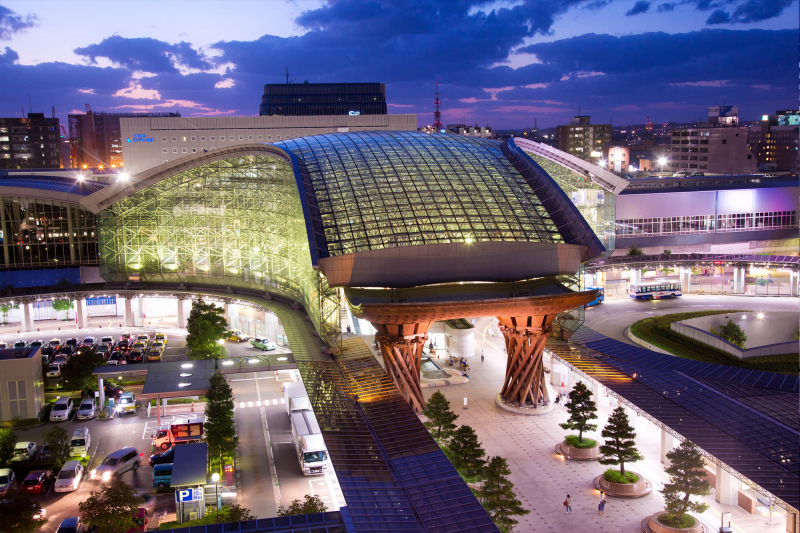
Ishikawa Travel -
One of the world's most extraordinary railway stations can be found in Maputo, Mozambique's steamy capital city. The CFM station in Mozambique's capital city is the only African railway station on this list, and it is heavily influenced by Portuguese architecture. It was completed in 1916 after being designed by Alfredo Augusto Lisboa de Lima, Mário Veiga, and Ferreira da Costa. The station has a great view of the famous Workers' Square. The CFM station houses a collection of steam locomotives. On occasion, it also serves as a venue for concerts and exhibitions.
The central rail station's bronze dome in Maputo, Mozambique, stands out impressively against the surrounding, uncluttered skyline. The modestly attractive building has wrought-iron latticework, a mint-green and white exterior, and a collection of vintage steam locomotives.
The station was abandoned for a long time and allowed to deteriorate. But it is experiencing a revival of sorts, much like the rest of the city. The station now doubles as a venue for public art, exhibiting the creations of regional artists and hosting events like concerts and fashion shows.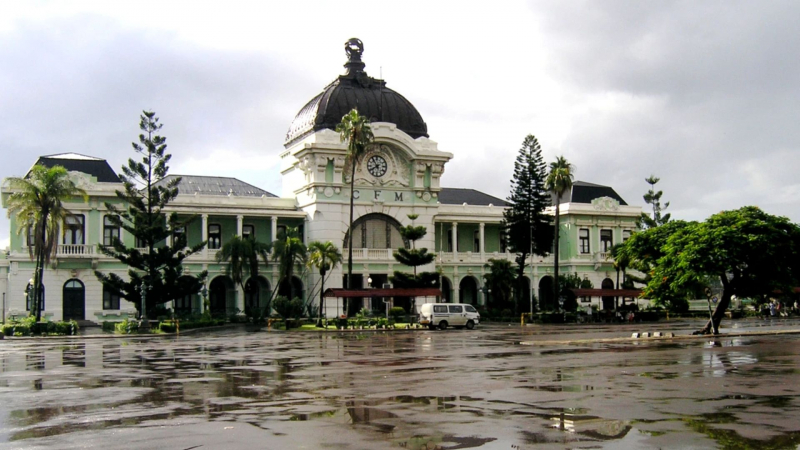
Caminho de Ferro de Moçambique - Dumplestilskin 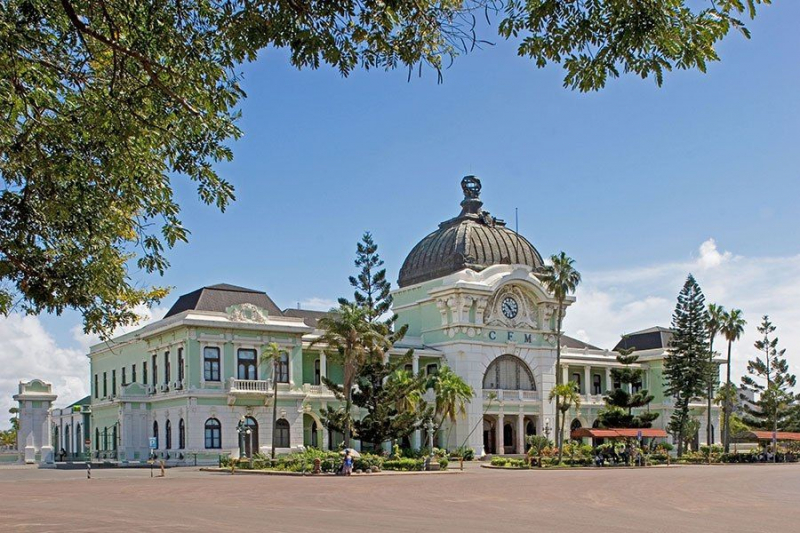
Pinterest -
The Antwerp Central railway station, one of the most stunning in the world, first opened its doors in 1905. Louis Delacenserie, who was primarily responsible for its design, combined several architectural eras. Delacenserie is responsible for the enormous dome over the waiting area, Clement van Bogaert designed the trainshed, and architect Jan Van Asperen created the glass viaduct leading into the station. Numerous surveys have named this Belgian building the most beautiful train station.
More than 20 different types of marble and stone are lavishly used to decorate the magnificent Antwerp station waiting hall, which was finished in 1905. However, the contrast of the skylights and soaring arched windows that flood the concourse with light prevents this from feeling ponderous. A stunning iron and glass roof can also be seen on the upper train platform.
Dilapidated pediments and turrets removed in the 1950s have been meticulously restored in 2009, preserving the original terminal's integrity even as new tunnels have been dug to accommodate through traffic and high-speed rail.It would be difficult to choose a station that better embodies the glory days of rail travel than Antwerpen-Centraal. It is a large-scale representation of the history of continental rail travel and is solid, imposing, and made of iron, glass, marble, and granite.
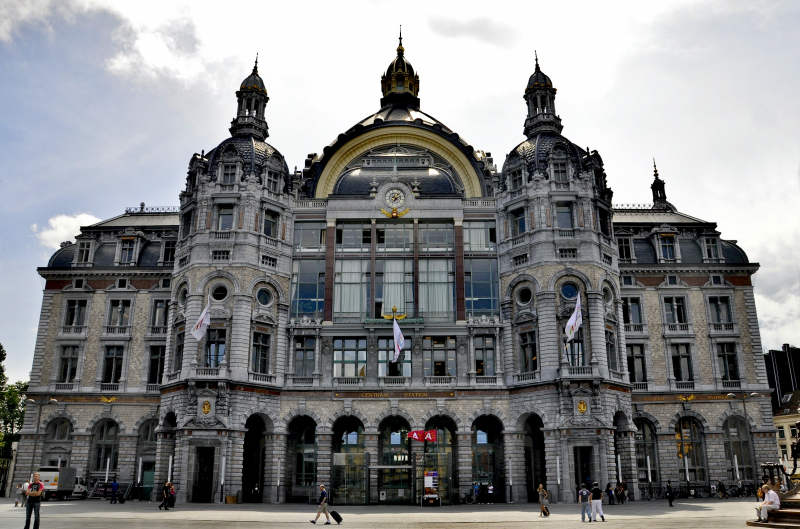
Wikipedia 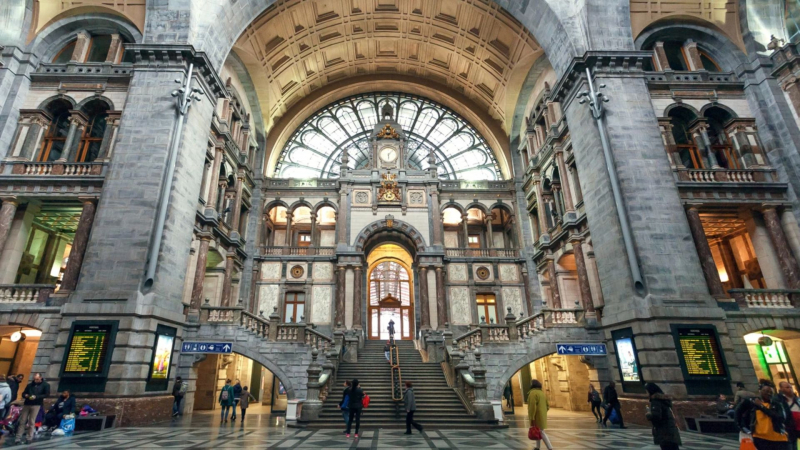
Terminus building of Antwerp Centraal - Dreamstime -
The Liège-Guillemins station scoffs at those who claim that the golden age of rail is over. The station, which opened in 2009 and draws heavily on airport-style architecture, is a strikingly modern blend of steel, glass, and white concrete. If you had no idea what Liège's main station was, you might guess a football stadium or a concert hall. This 2009 iteration of steel, glass, and white concrete looks like a UFO has landed atop a series of railway platforms, the latest of several reconstructions since the first station was built here in 1842 - a happy reminder that the evolution of train station design is far from over.
The sleek high-speed trains that use the station inspired Santiago Calatrava to design it in a way that would reflect the changes in rail travel. In keeping with modern efficiency, it only has five platforms and is dominated by a 32-meter-tall monumental arch.
His version finished in 2009, unites two neighborhoods that were previously divided by railroad tracks and replaces a 1958 International Style building (which itself replaced an 1842 Beaux Arts structure). The enormous ribbed vault that Calatrava designed here flows organically and suggests a wave breaking over the thousands of passengers who pass under it every day. This is a clear example of his interest in the plasticity of concrete.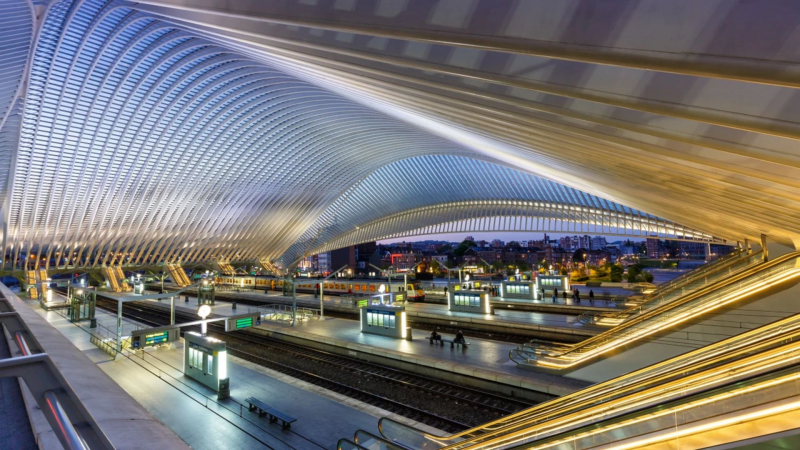
Liège-Guillemins railway station at twilight - Dreamstime 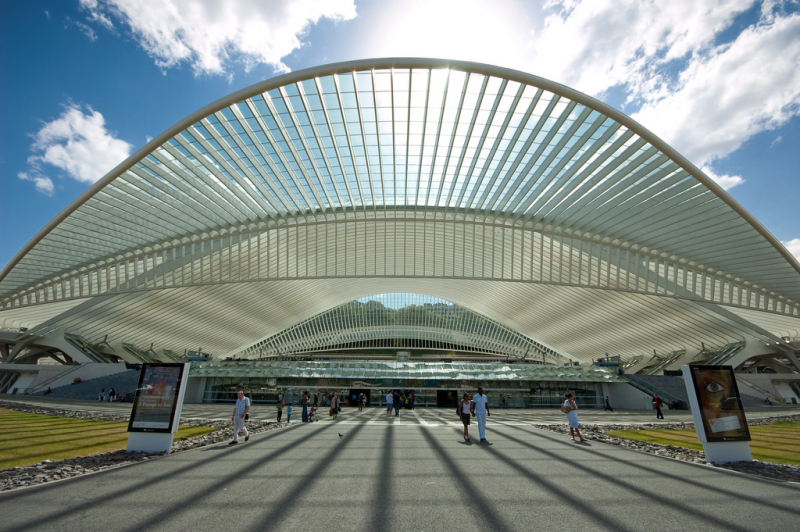
The Beauty of Transport -
Sirkeci Station, designed by architect August Jasmund, opened in 1890. This Turkish station is built in a mix of Art Nouveau and Oriental architecture and is located near the Bosporus strait. The stained glass windows and clock towers are especially notable features of the station, which was once the terminus for the famous Orient Express, which connected Paris to Istanbul.
The magnificent Sirkeci station was a fitting fusion of French Art Nouveau and Ottoman aesthetics as Istanbul's gateway to Europe. With 300 gas lanterns and Austrian-imported tile stoves, it was considered quite modern for its time when it first opened in 1890. The station, which is located at the mouth of the Bosporus Strait, has stained glass windows, clock towers, and bands of brick on its exterior. Up until the line's termination serving Istanbul in 1977, the station served as the endpoint for the illustrious Orient Express, which connected Paris's Gare de l'Est with Turkey in an 80-hour journey.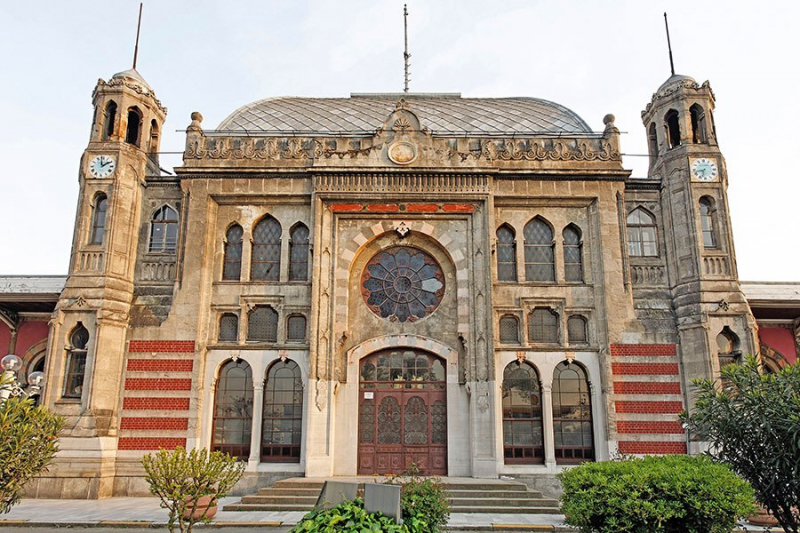
Fleming's Bond 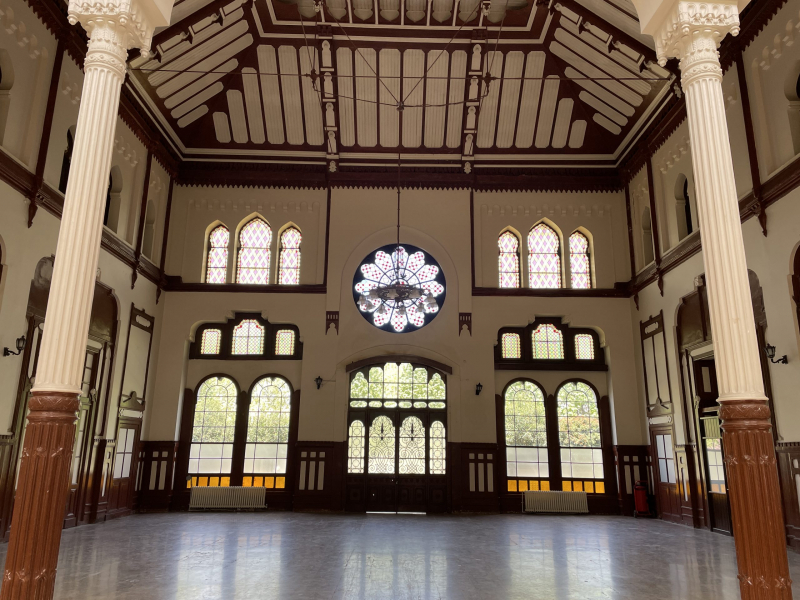
RailTech.com -
Unsurprisingly, one of the world's most beautiful cities also has one of the most beautiful train stations. The Gare du Nord, which first stood in operation in 1864, is a magnificent work of architecture. The decorations on it go well with its neoclassical design. These consist of the 23 female statues on the facade that stand in for the places the railway line goes.
This magnificent Beaux Arts complex in Paris's 10th arrondissement is one of the world's oldest rail stations, as well as one of the busiest and possibly the most magnificent. The façade is adorned with twenty-three female statues, each representing a destination served by the rail line. The interior of the station is illuminated by soaring windows, and the train shed's glass-and-cast-iron roof is a triumphant marriage of engineering and beauty.
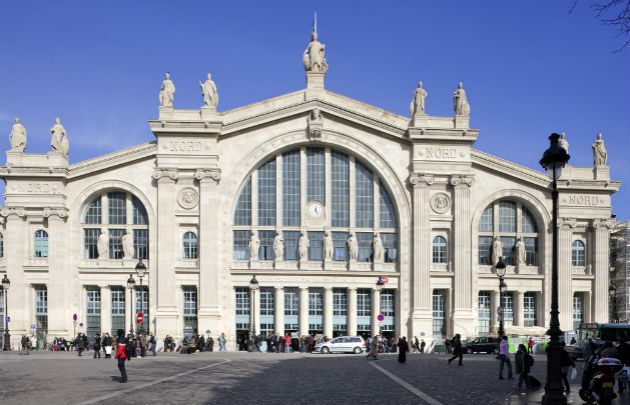
Office de tourisme Paris 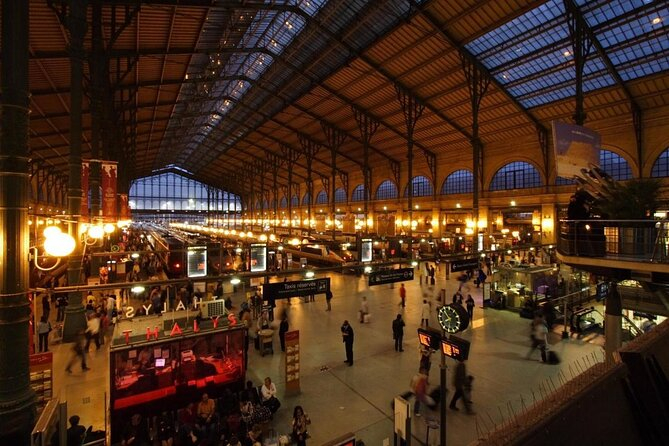
Viator -
The St. Pancras International, also known as the "cathedral of the railways," first opened its doors in 1868. Since then, it has undergone numerous renovations, but it has kept its original charm. It is adorned with numerous works of art and is known for its Victorian architecture. The arched train shed at the station was the biggest single-span building at the time. The Renaissance Hotel has taken up residence on its facade. There are many stores and restaurants located inside the station.
The building was saved from demolition by a raucous public campaign, and its fortunes were revived by the opening of the Channel Tunnel. After an £800 million facelift, it became the London Eurostar terminal, which Queen Elizabeth II opened in 2007. Its revitalization has resulted in the gentrification of the surrounding area. It was once a desolate wasteland of industrial lockups and abandoned warehouses, but it is now a thriving neighborhood of cafes, restaurants, and creative start-ups.
There are many train stations in London, but St. Pancras International stands out as being particularly lovely. Most people agree that the station is among the most opulent ones in the entire world. St. Pancras International served as the main route into London from neighboring cities. It was designed by William Henry Barlow and constructed by the Midland Railway Company, who infused the station with Gothic moments throughout.
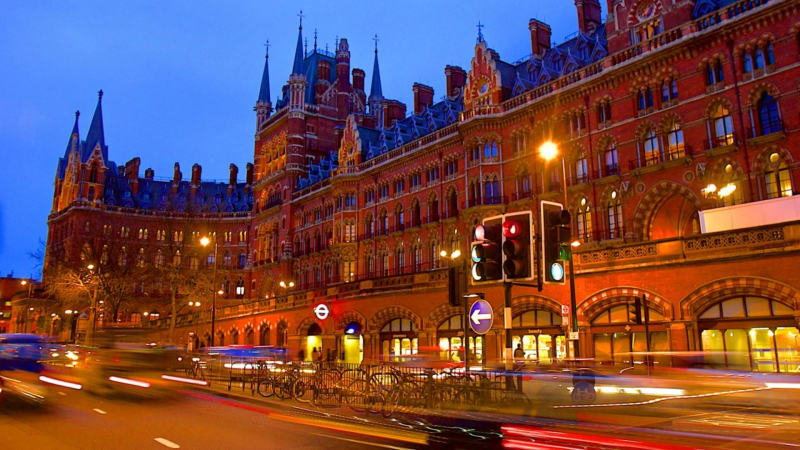
St Pancras International - Dreamstime 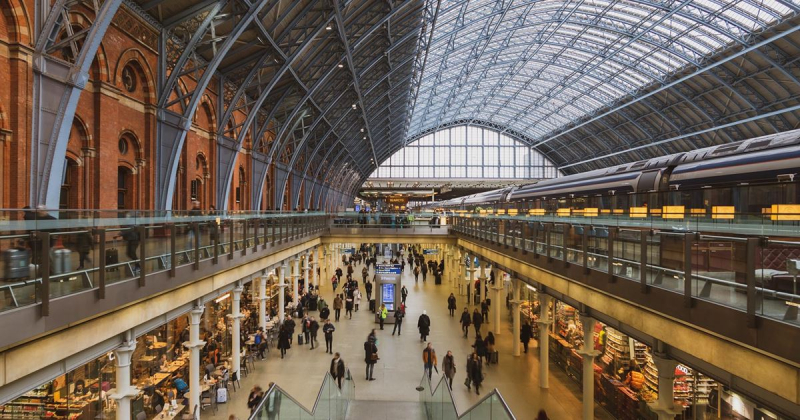
St. Pancras International -
A station in the southern hemisphere is adjusting to the real politik of rail travel in that region of the world while the futuristic Liège-Guillemins railway station in Belgium ushers in an exciting new era of rail travel on the continent.
In order to survive, the Flemish Renaissance-inspired Dunedin Railway Station in New Zealand had to adopt multifunctionalism. Although he had apparently preferred an alternative design that had a "Scottish manor house" feel, architect George Troup became known as "Gingerbread George" thanks to this fairytale castle made of basalt and limestone.
The building, which once housed New Zealand's busiest station but has since seen a sharp decline in traffic, is now home to the New Zealand Sports Hall of Fame in addition to a restaurant and an art gallery. The main platform is changed into the "longest runway in the world" each year for a fashion show.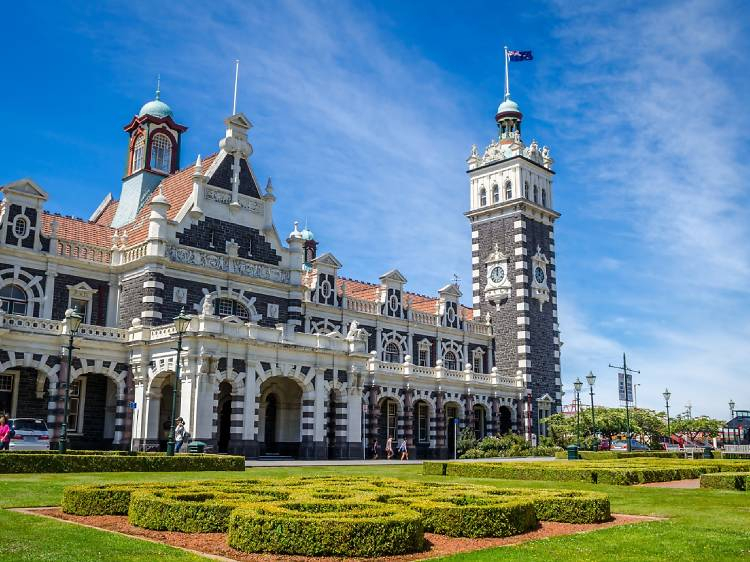
Shutterstock 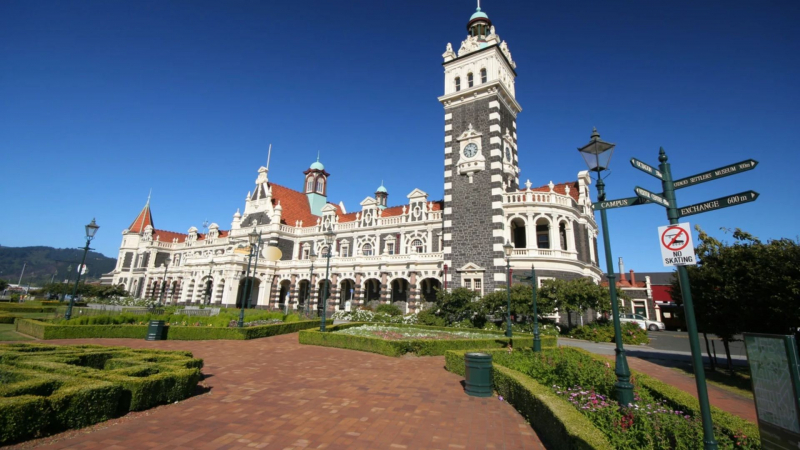
Dunedin Railway Station - Dreamstime -
Helsinki Central Railway Station is distinctly Scandinavian, down to the enormous guardians holding lamps who appear to be guarding the entrance to Asgard. The station was constructed in a contemporary, rational style.
The Helsinki Central Station is one of the most well-known landmarks in Finland's capital. Eliel Saarinen, a Finnish architect, designed the station. This was his second attempt after his winning design was criticized for being too traditional. The current structure, an Art Deco-style structure with a curved grand entrance, replaced the city's first railway station, which was built in 1860 and served the Helsinki-Hameenlinna route. Even though the new one gained popularity right away, things got off to a rocky start because Carl Albert Edelfelt, the original architect, had designed a structure that was too small. As a result, the government held a competition to find a new architect. Eliel Saarinen was chosen as the station's new designer after 21 entries were received. He completed his new design in 1909, and the station didn't open until ten years later.
A lounge was also present, but by the time the station opened in 1919, two years after the Russian Revolution, it was no longer necessary for the Emperor of Russia to use it. The President of Finland now makes use of it.
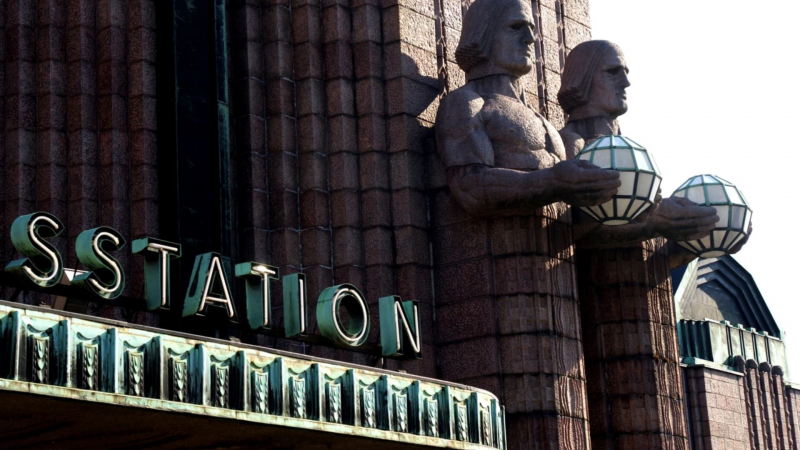
The guardians of Helsinki Central - Dreamstime 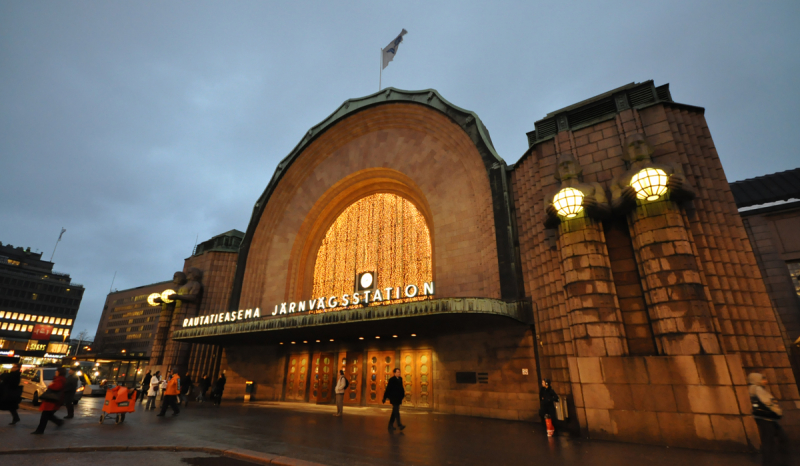
Discovering Finland














